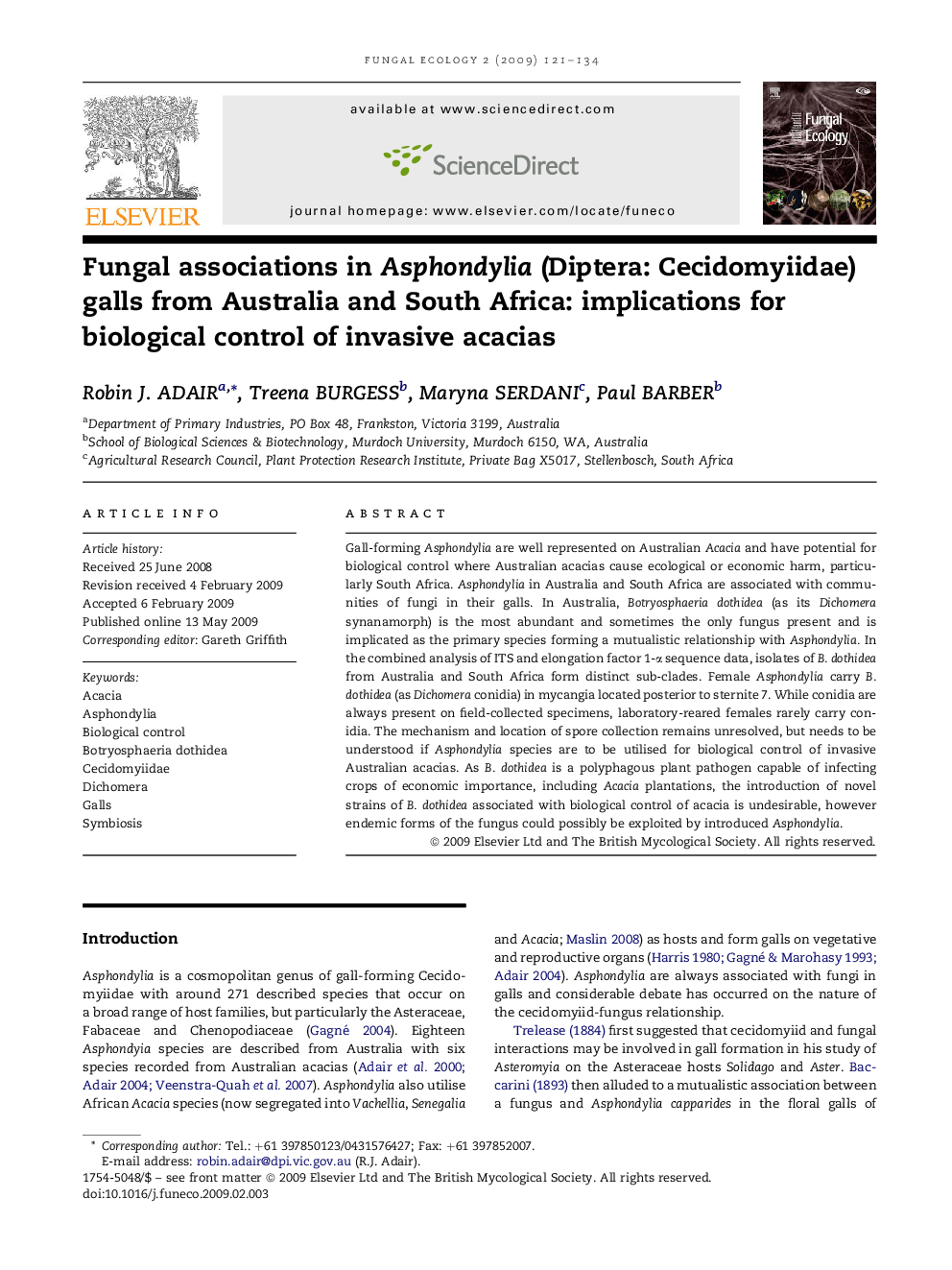| Article ID | Journal | Published Year | Pages | File Type |
|---|---|---|---|---|
| 2053718 | Fungal Ecology | 2009 | 14 Pages |
Gall-forming Asphondylia are well represented on Australian Acacia and have potential for biological control where Australian acacias cause ecological or economic harm, particularly South Africa. Asphondylia in Australia and South Africa are associated with communities of fungi in their galls. In Australia, Botryosphaeria dothidea (as its Dichomera synanamorph) is the most abundant and sometimes the only fungus present and is implicated as the primary species forming a mutualistic relationship with Asphondylia. In the combined analysis of ITS and elongation factor 1-α sequence data, isolates of B. dothidea from Australia and South Africa form distinct sub-clades. Female Asphondylia carry B. dothidea (as Dichomera conidia) in mycangia located posterior to sternite 7. While conidia are always present on field-collected specimens, laboratory-reared females rarely carry conidia. The mechanism and location of spore collection remains unresolved, but needs to be understood if Asphondylia species are to be utilised for biological control of invasive Australian acacias. As B. dothidea is a polyphagous plant pathogen capable of infecting crops of economic importance, including Acacia plantations, the introduction of novel strains of B. dothidea associated with biological control of acacia is undesirable, however endemic forms of the fungus could possibly be exploited by introduced Asphondylia.
